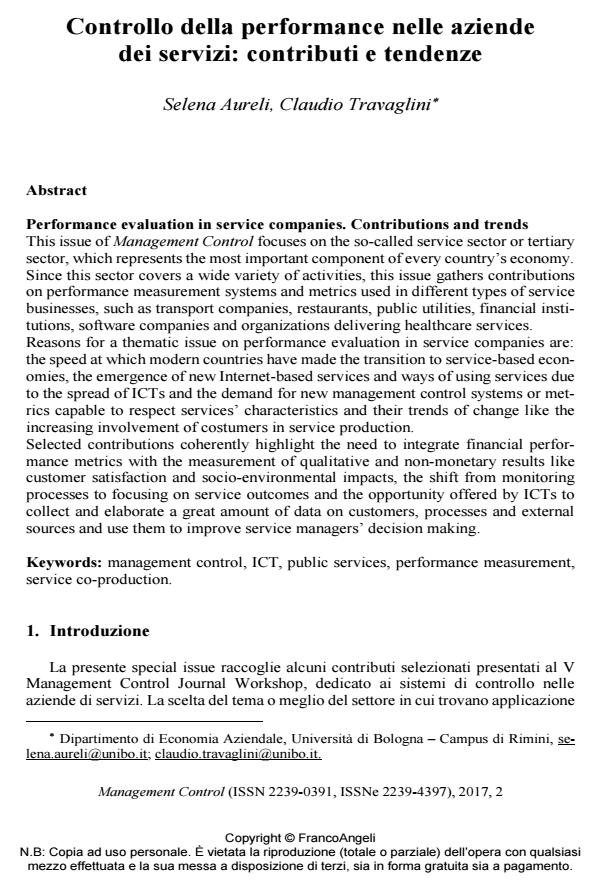Performance evaluation in service companies. Contributions and trends
Journal title MANAGEMENT CONTROL
Author/s Selena Aureli, Claudio Travaglini
Publishing Year 2017 Issue 2017/2
Language Italian Pages 8 P. 5-12 File size 248 KB
DOI 10.3280/MACO2017-002001
DOI is like a bar code for intellectual property: to have more infomation
click here

FrancoAngeli is member of Publishers International Linking Association, Inc (PILA), a not-for-profit association which run the CrossRef service enabling links to and from online scholarly content.
This issue of Management Control focuses on the socalled service sector or tertiary sector, which represents the most important component of every country’s economy. Since this sector covers a wide variety of activities, this issue gathers contributions on performance measurement systems and metrics used in different types of service businesses, such as transport companies, restaurants, public utilities, financial institutions, software companies and organizations delivering healthcare services. Reasons for a thematic issue on performance evaluation in service companies are: the speed at which modern countries have made the transition to servicebased economies, the emergence of new Internet-based services and ways of using ser-vices due to the spread of ICTs and the demand for new management control systems or metrics capable to respect services’ characteristics and their trends of change like the increasing involvement of costumers in service production. Selected contributions coherently highlight the need to integrate financial performance metrics with the measurement of qualitative and non-monetary results like customer satisfaction and socio-environmental impacts, the shift from monitoring processes to focusing on service outcomes and the opportunity offered by ICTs to collect and elaborate a great amount of data on customers, processes and external sources and use them to improve service managers’ decision making.
Keywords: Management control, ICT, public services, performance measurement, service co-production.
Selena Aureli, Claudio Travaglini, Controllo della performance nelle aziende dei servizi: contributi e tendenze in "MANAGEMENT CONTROL" 2/2017, pp 5-12, DOI: 10.3280/MACO2017-002001